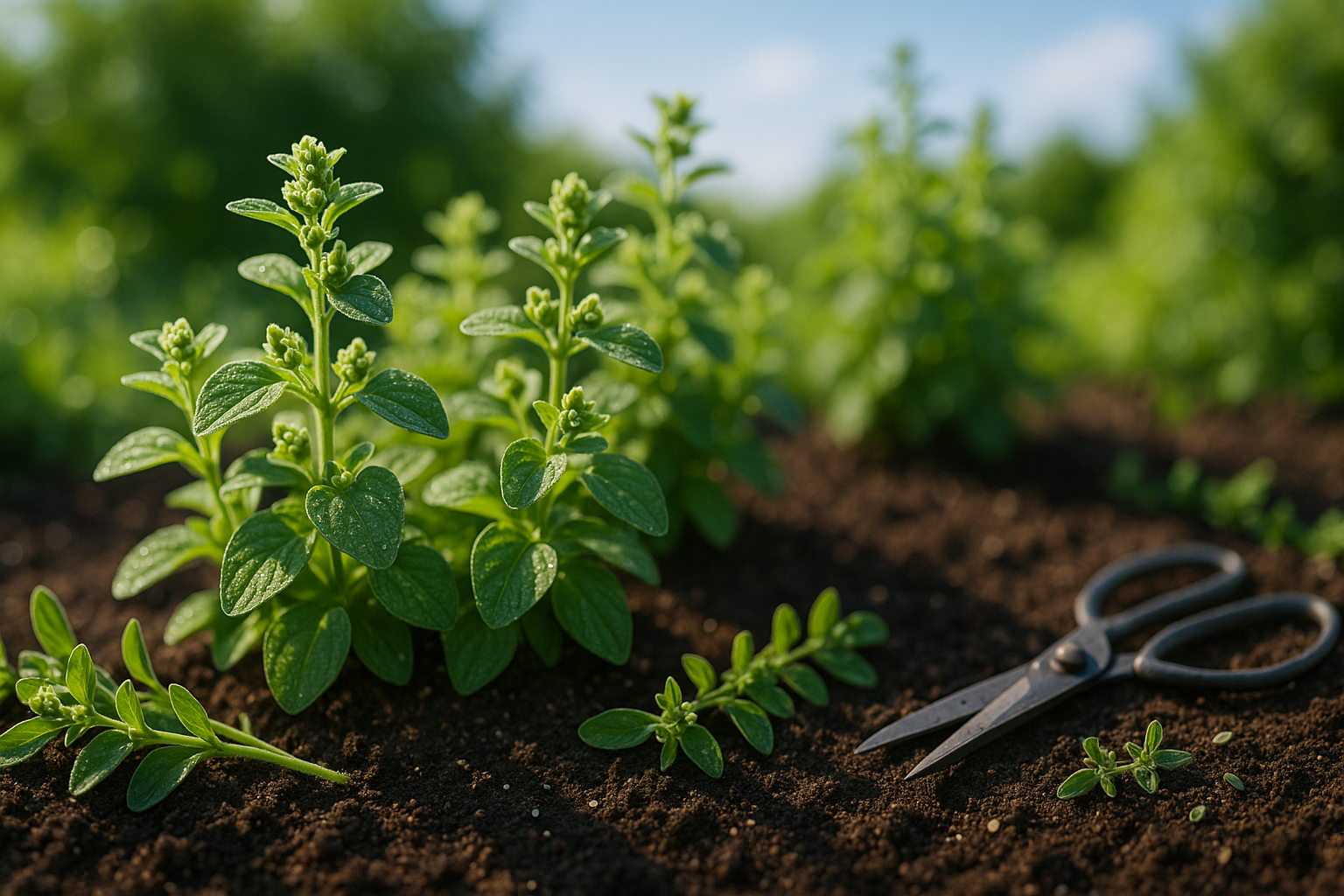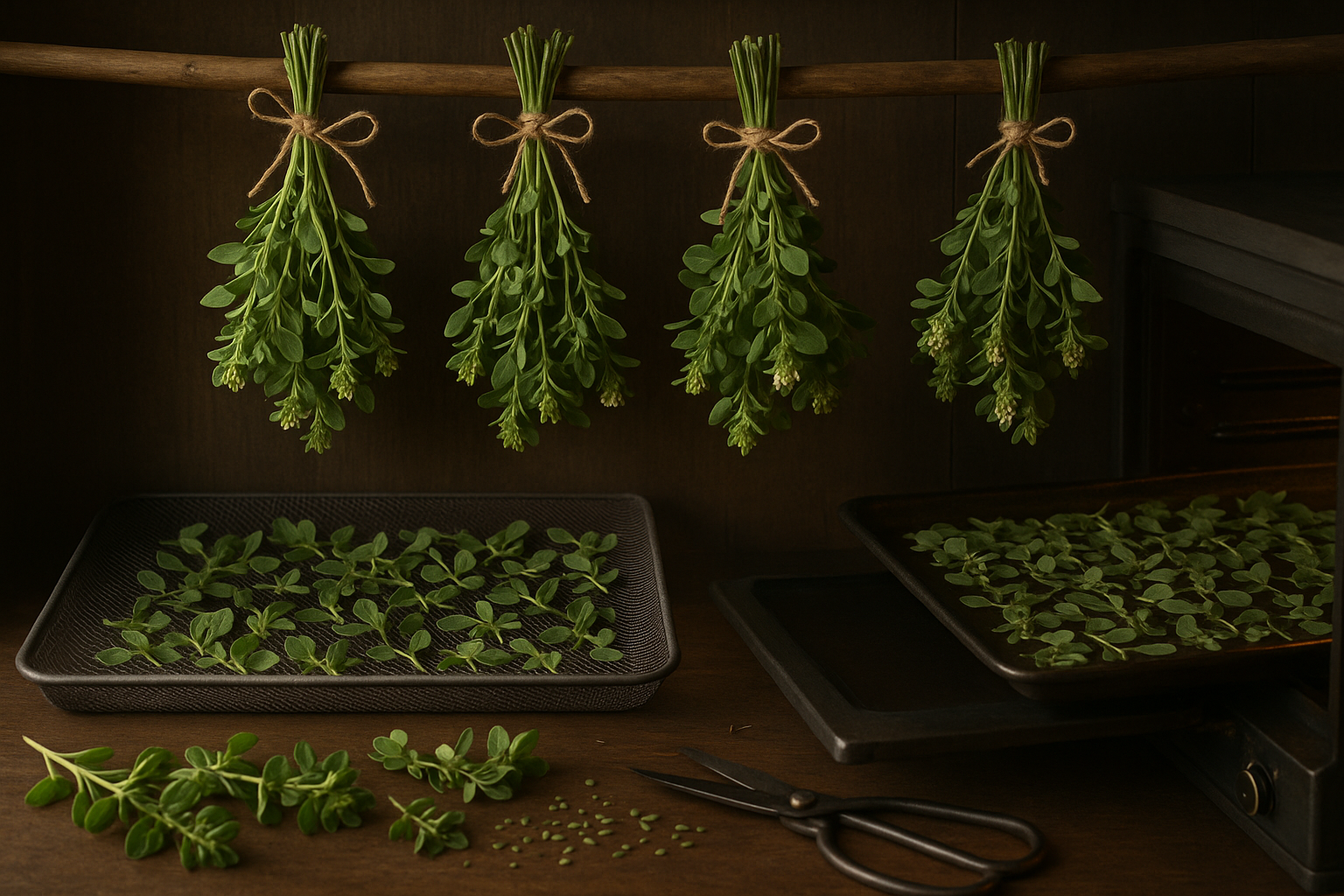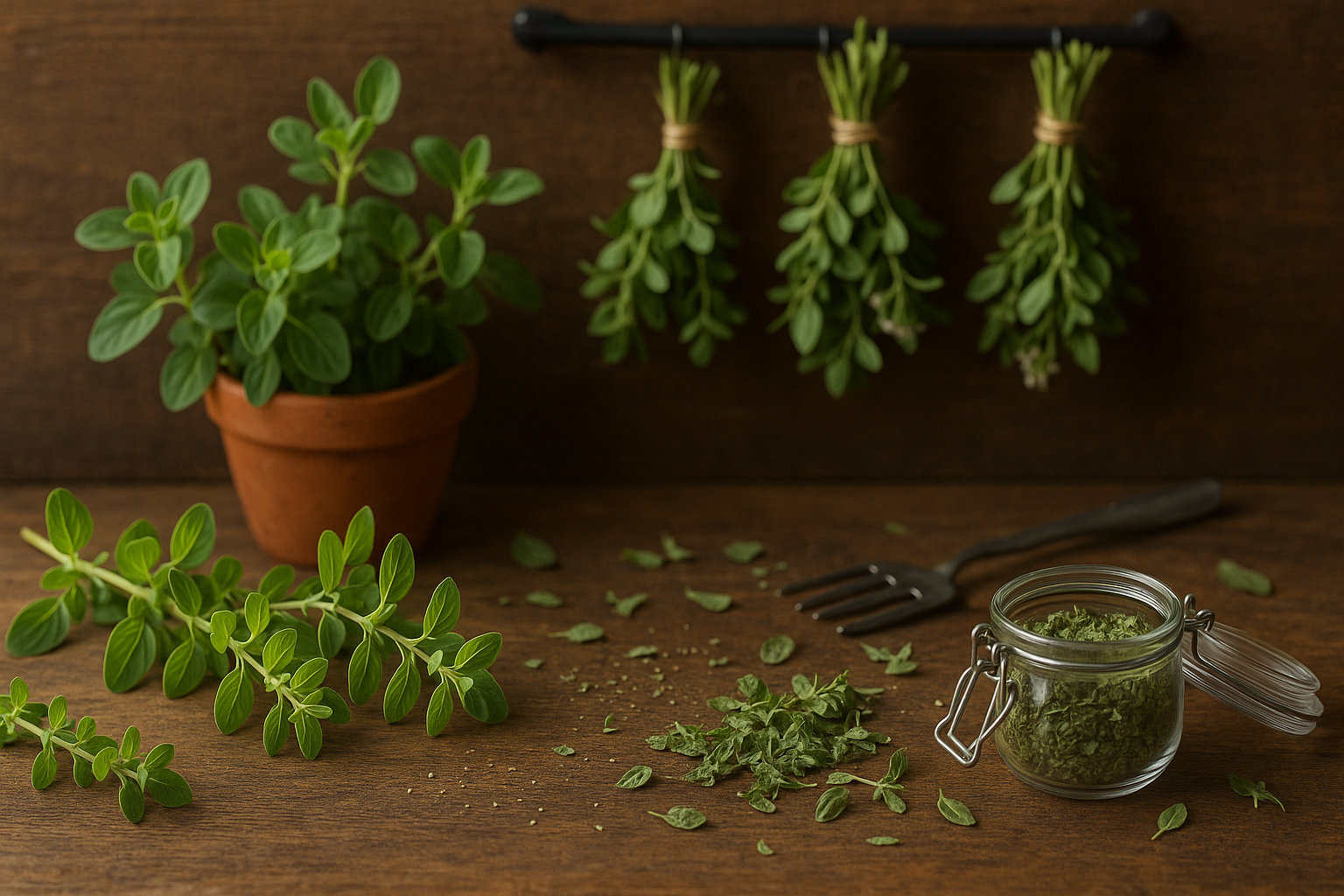Introduction to Marjoram & Drying Benefits
Drying marjoram is one of the easiest ways to preserve the vibrant, sweet flavor of this beloved culinary herb. Known for its gentle, slightly floral aroma, sweet marjoram elevates everything from Mediterranean dishes to homemade soups. However, fresh marjoram has a short lifespan, making it tricky to enjoy year-round.
That’s where drying marjoram comes in—it locks in the herb’s essential oils, concentrating both flavor and fragrance while greatly extending shelf life. Whether you grow marjoram in your garden or buy it fresh at the market, drying allows you to capture its delicate notes for months to come.
Many home cooks love the control and quality that come with DIY drying methods, from air-drying bunches in your kitchen to using an oven or dehydrator for faster results. With dried marjoram always on hand, you’ll never have to settle for bland, store-bought herbs again.
Growing & Harvesting Marjoram for Drying

Marjoram thrives in well-draining soil rich in organic matter and prefers a sunny spot with at least six hours of direct sunlight daily. When first planting marjoram, keep the soil lightly moist until the plants establish themselves. After that, water only when the top inch of soil feels dry—marjoram dislikes “wet feet” but can tolerate some drought.
To maximize the herb’s flavor for drying, harvest just before or as the plants begin to bloom, typically in late spring or early summer. This timing ensures the aromatic oils are at their peak. Snip sprigs in the morning after the dew has dried but before the sun becomes too hot; this helps preserve the essential oils.
For a household herb supply, growing two to three marjoram plants is usually enough. You can expect fresh cuttings throughout the growing season and plenty of stems at harvest time to dry for winter use. When harvesting, remove about one-third of the plant each time to keep it healthy and encourage bushier growth for future pickings.
Preparing Marjoram for Drying
After harvesting marjoram, start by gently shaking off any dirt or insects, then rinse the sprigs under cool water to remove debris. Lay the stems out on a clean towel and let them air dry completely; moisture left on the leaves can lead to mold during drying.
Once dry, you have two options: bundle whole stems or strip the leaves.
Bundling Whole Stems
Gather small bunches of stems—about five to ten sprigs—and tie them loosely with string, leaving space for air circulation. Hang the bundles upside down in a warm, dark, and well-ventilated place, like a pantry or closet.
Drying Just the Leaves
If you prefer to dry just the leaves, strip them from the stems and spread them in a single layer on a mesh drying rack or a baking sheet lined with a paper towel.
Whichever method you choose, make sure the leaves are not overlapping. This helps prevent uneven drying and preserves the herb’s delicate flavor.
Drying Methods: Air-Drying & Other Options

To air-dry marjoram, start by harvesting fresh sprigs in the morning after the dew has dried. Gently shake off any excess moisture and remove wilted leaves. Gather small bunches—about five to eight stems—and tie the ends with kitchen twine or a rubber band.
Hang the bundles upside down in a warm, dry place with good air circulation, such as a pantry or a shaded porch. Avoid direct sunlight, as it can cause the leaves to lose flavor and color. Dark, well-ventilated rooms work best. You can also use a paper bag with holes punched in it to keep dust off while still allowing airflow.
Drying should take about 1 to 2 weeks.
Alternatively, try using a dehydrator set to the lowest herb setting. Arrange the leaves in a single layer and check them after a few hours for crispness.
If you prefer to use your oven, keep the temperature at its lowest setting (usually around 180°F or 80°C). Place the marjoram on a baking sheet and prop the oven door open for air circulation. Herbs should be dry in 1 to 2 hours.
Fully dried marjoram will feel crumbly to the touch, hold a muted green color, and release a strong, signature aroma when crumbled between your fingers. Store it in an airtight container to preserve freshness.
Storing Dried Marjoram Properly
To keep dried marjoram fresh and flavorful, store it in airtight containers—glass jars with sealing lids or metal tins work best, as they prevent air and moisture from getting in. Place the container in a cool, dark, and dry spot, such as a pantry or cupboard away from direct sunlight and heat, which can degrade the herb’s oils and color.
Always label the container with the herb’s name and the date it was stored; this helps you keep track of freshness, especially if you have multiple herbs. Dried marjoram usually stays potent for one to three years, but its aroma and taste will fade over time.
To check if it’s still good, crush a small amount between your fingers—if the scent is weak or there’s no earthy, slightly sweet aroma, it’s time to replace it. Storing marjoram properly ensures your recipes always benefit from its best flavor.
Cooking & Usage Tips for Dried Marjoram
Dried marjoram offers a warm, slightly sweet flavor with hints of citrus and pine, but it delivers a more concentrated punch compared to its fresh counterpart, which is lighter and more delicate. Because of this intensity, it’s best to use less dried marjoram in recipes—generally, one teaspoon of dried marjoram can replace one tablespoon of fresh (a 1:3 conversion).
This herb shines in Mediterranean and Italian dishes, adding depth to tomato sauces, soups, and roasted meats. Try adding a pinch to homemade vinaigrettes, potato salads, or roasted vegetables for an earthy, aromatic lift.
For the best flavor, add dried marjoram near the end of cooking to preserve its fragrance, as prolonged heat can dull its nuances. If you’re making rubs for chicken or lamb, mix dried marjoram with garlic, rosemary, and olive oil for a simple, savory blend.
Keep the jar tightly sealed, and remember a little goes a long way—taste as you go to avoid overpowering your dish.
Troubleshooting & FAQs
Common issues when drying marjoram include mold growth, loss of flavor, and leaves turning too brittle.
Preventing Common Problems
To prevent mold, always dry marjoram in a warm, well-ventilated space and avoid stacking leaves too thickly. If the flavor seems weak, harvest marjoram just before flowering and store dried leaves in airtight containers away from heat or sunlight. Overly brittle leaves may mean you dried them too long; aim for slightly pliable, not crumbly.
FAQs
- Why did my marjoram develop mold? Usually, it’s dried too slowly or in humid conditions.
- How long does dried marjoram last? Properly stored, it lasts up to one year.
- Can I use a dehydrator? Yes, set it to low heat for best results.
